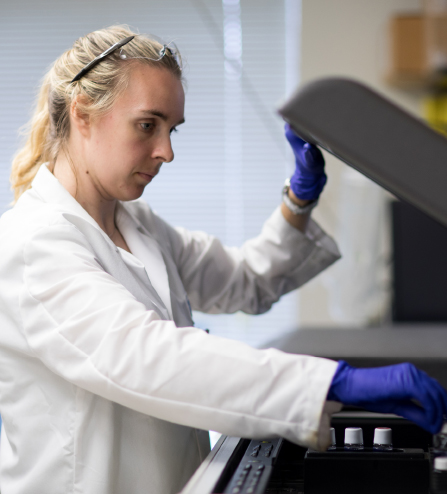
In the 1970s, while he was a young assistant professor at Temple University Medical School in Philadelphia, Vern Schramm, Ph.D., advocated using kinetic isotope effects for studying enzyme reactions in general and solving their transition states in particular. Some of his most important peers questioned the approach. And the research itself meant working at the outer edge of what was scientifically possible at the time.
“It was really difficult doing kinetic isotope experiments when we started,” recalls Vern, who is now a professor of biochemistry at Einstein. “You had to make a lot of your own equipment because it couldn’t be bought anywhere. It was complicated stuff—some of it was over my head at the time—but I was lucky. I was able to get postdocs who’d trained in theoretical chemistry to join my lab. Working together—I from the enzyme side and they from the theoretical side—we really started understanding in detail the nature of the enzyme transition state.”
Within five years of embarking on this research, Vern’s group had described the transition states of several different enzymes. His use of kinetic isotope effects was starting to gain acceptance, but some expert enzymologists still thought Vern was wasting his time.
“I’ll never forget the first time I talked about isotope effects at a Gordon Research Conference on enzyme mechanisms,” Vern recalls. “I noted that inserting a heavy isotope at any particular position in an atom will cause the reaction rate to differ by only a few percent from the rate using the normal substrate.”
In the audience were several of the country’s foremost enzymologists, sitting together in the front row.
“After my talk,” Vern says, “I heard that one of them turned to his neighbor and said, ‘How will we ever learn anything about enzymes from a 1 percent isotope effect?’, and then they laughed. But it wasn’t long before many of them were using isotope effects in their research, because their power was so persuasive.”
—Larry Katzenstein
 At top: Samples on their way to becoming transition-state analogues. Above, Postdoctoral fellow Ashleigh Paparella measures a kinetic isotope effect.
At top: Samples on their way to becoming transition-state analogues. Above, Postdoctoral fellow Ashleigh Paparella measures a kinetic isotope effect.